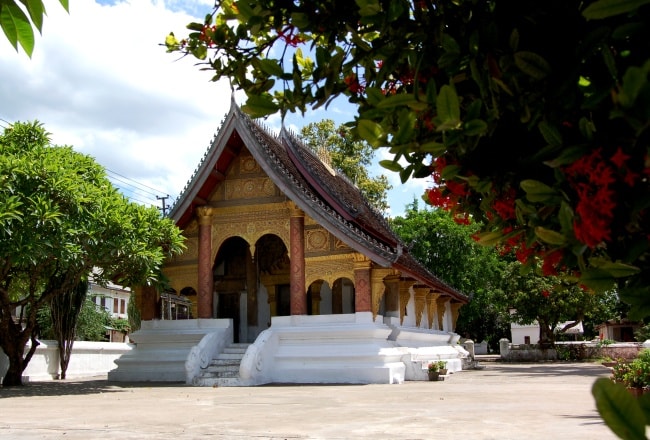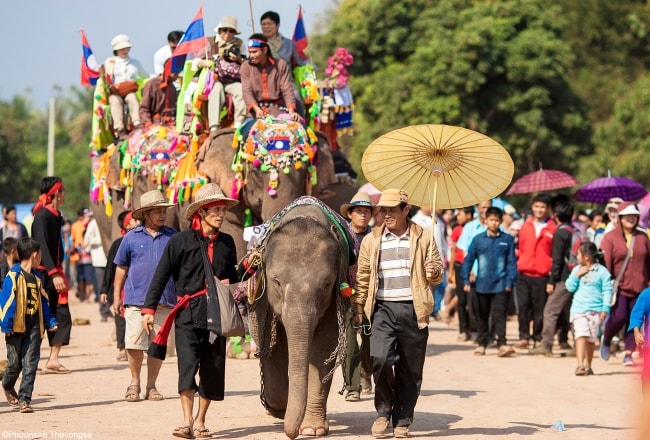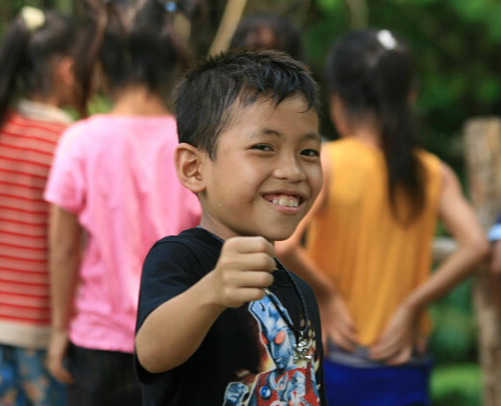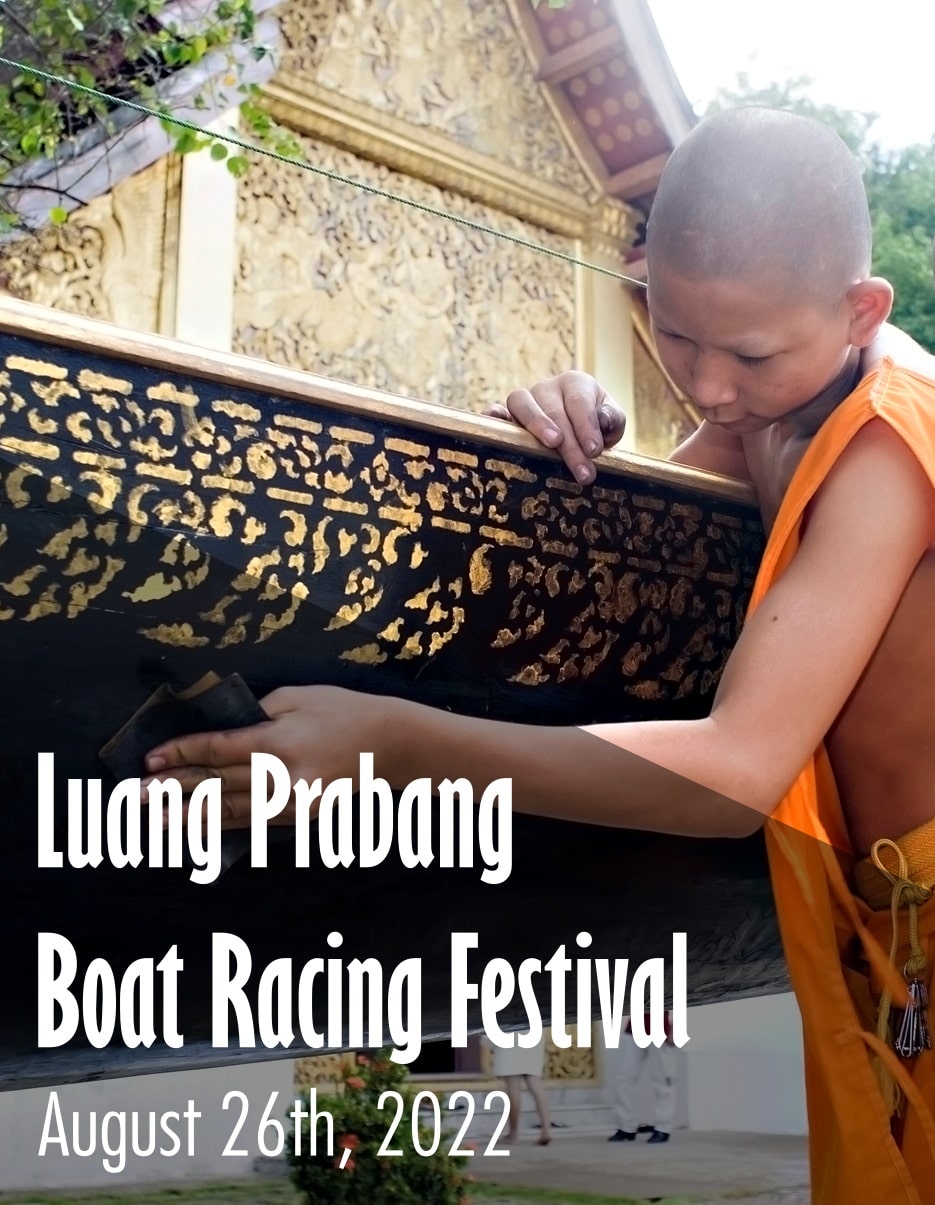Travelers who choose to visit Laos, often find themselves looking for Things to do in Sayaboury.
We have made for you a list of the most exciting things to do in Sayaboury, Laos.
Attractions
The Elephant Conservation Center

The Elephant Conservation Center marks a new era for conservation of the Asian elephant within the Lao PDR and offers a unique experience to visitors wishing to contribute towards the preservation of an endangered species. The first of its kind in Laos, the Center is not another elephant camp but an innovative approach that combines conservation of an endangered species with eco-tourism. Minimum stay is overnight, however we recommend the 2 nights package to experience all the activities and truly enjoy this tranquil part of the world. Volunteer experiences, 6 nights/7 days are also available. Here they offer the transfer by minivan departing Luang Prabang daily at 8am and it takes you back the following day or days arriving Luang Prabang 4.30pm. It is only a 2 hour journey from Luang Prabang, Laos' UNESCO World Heritage listed town.
Location: Nam Tien Lake Sayaboury Lao PDR
Click here to get more information
Vat Sibounheuang Temple

Built in 1456, Sayaboury’s oldest amongst most beautiful temple houses a 7-meter-long reclining golden Buddha…the province’s largest. Located on a hilltop overlooking the Nam Houng River in Sayaboury municipality, the mural-adorned Vat Sibounheuang attracts locals who come to ask for blessings before a trip and go to make merit upon their return.
Also visible are the remains from the original temple.
A stupa on the grounds sits on a singkhone with four spirit-ghosts – two small and two large – who are honest and strong. The village ghost also resides at Vat Sibounheuang, and each year in mid-March, the district’s three-day Boun Phavet (Ghost Festival) procession, held in remembrance of Phavet who was once upon a time guarded back to town by the forest spirits starts at the cemetery and ends with the burning of clothes and throwing them in the river.
Location: Vat Sibounheuang is located in the center of Sayaboury municipality.
Vat Sisavangvong
One of three Lao temples regarded as of the highest rank (the other two being in Paklai District and Attapeu Province), it is considered a privilege for aspiring novices to study, meditate and be ordained for the monkhood at Vat Sisavangvong, as only some 100 are chosen for the honor.
The temple stands out for its long decorative Naga banisters, which represent the guardian water serpent, and tiger figures, which are the earth’s protectors. According to legend, if a male wants to be a monk, he must first ask Naga and make merit by presenting it with gold. Then the resident monks decide on admission.
Location: Vat Sisavangvong is located in the center of Sayaboury municipality next to the Governor’s building.
Tad Jao Waterfall
The waters feeding this narrow, 20-metre plunge on the banks of the Mekong have attracted royalty from Lane Xang Kingdom rulers to present-day Thai Princess Prathep as bathing in or drinking from them is believed to bring good health and wash away bad luck.
A small hermit cave and shrine sit at the head of the falls, and villagers built a shrine above it in 1985 as they consider the area sacred, and disturbing it leads to illness and death. Elders remember when a Lao Airlines flight crashed after flying over the falls, air space that is now a no-fly zone. They say a Khmu soldier returning home in 1976 moved rocks in the stream, thus changing its course. The soldier died shortly after. A family once built a house there, but the stream washed it away.
Steps built for the Thai princess’s 1990-visit lead down to a picnic area on the Mekong and a view of the Tad Jao Waterfall.
Location: From Sayaboury municipality, drive for about 1 hour to Tha Deua and turn left at the turnoff to the under-construction bridge to Luang Prabang. At the cul de sac, a short trail leads to the falls.
Vat Natornoy
Constructed in 1950, fire razed the original wooden temple in 1959, but a local villager rebuilt the hilltop Vat Natornoy the following year. Inside, villagers hang baskets to make merit to Phavet (see page 40).
A 100-year-old don pho tree rises over the well-landscaped compound’s religious structures, including a curiously-configured “Heaven’s Tower”, which plays a prominent role during Pii Mai (Lao New Year) in mid-April. Locals carry perfumed water and flowers for merit-making, climb its stairs to pray, and pour the water down a wooden trough into a small hut and the hands of an awaiting Buddha image. Back downstairs, the faithful bow under Buddha’s hands, allowing the holy water to drip on their heads for good luck.
Location: From Sayaboury municipality, head south towards Paklai, pass the airport, and follow the road to the right, and then turn left. A small road to the river and temple.
Tham Phakounhuoay cave
35 km south of Sayaboury municipality. From Sayaboury Town rent a small motorbike or book tuk tuk and get ready for a ride along a mountainous road and across rivers until reaching Ban Nathang. Stop for lunch and a rest before embarking on a two-hour walk through rice paddies, forested hills (keep your eyes open for monkeys!), and rock formations. On the way visit Tham Phakounhuoay cave to view impressive limestone formations, and for the more adventurous and fit, follow the cave’s stream that runs for several kilometers through the extensive cavern network. After this venture, continue to the Khmu village of Ban Keo for dinner, Lao Hai (rice wine) and an overnight stay.
Location: Drive south past the Sayaboury bus station towards Paklai for some 10 km, and turn left at the signs for Ban Houaykeng.
Festival
The Lao Elephant Festival

The Asian elephant has its day, actually two, in mid-February when Laos turns its eyes to Sayabouly Province and the Elephant Festival. Launched in 2007, the annual fete draws more than 80.0000 elephant fans to the ceremonies, processions, and performances to pay tribute to the national symbol of “The Land of Million Elephants”.
Home to the country’s largest pachyderm population, Sayabouly Province is the natural choice to host this growing event that also aims to raise awareness about the need to protect the endangered Asian elephant, which has played such a vital role in Lao people’s livelihoods, culture and heritage.
After an opening ceremony, a procession of elephants enters the host village through a bamboo arch. The elephants bathe and are blessed by monks, with participants making merit in a baci ceremony, before with the election of the “Elephant of the Year”. Then the entertainment begins: pachyderm performances, musical concerts, outdoor films, dance shows, and fireworks displays in a carnival atmosphere that includes elephant rides and a “Fun Fair”. After the second day’s procession and religious ceremony, mahouts round up their massive mammals for a day of elephant entertainment and visitor education capped with the crowning of the elephant of the Year. For an even more authentic experience, visitors can book a village home-stay.





















